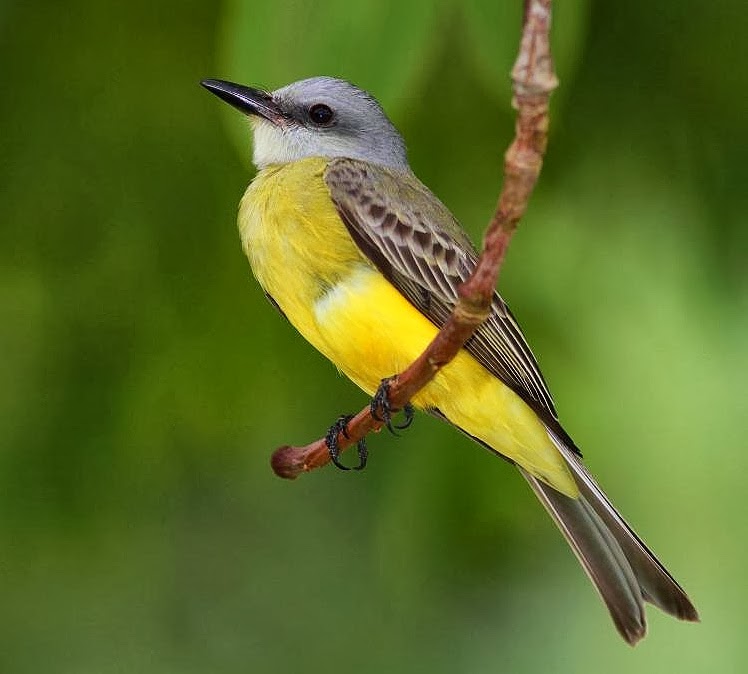 |
| Photo by Guy Poisson (Internet Bird Collection) |
Common name:
tropical kingbird (en); suiriri-comum (pt); tyran mélancolique (fr); benteveo real (es); trauertyrann (de)
Taxonomy:
Order Passeriformes
Family Tyrannidae
Range:
This species is found from in Central and South America, from Mexico to northern Argentina. They are absent from the Caribbean with the exception of Trinidad and Tobago.
Size:
These birds are 18-24 cm long and weigh 32-43 g.
Habitat:
The tropical kingbird is found in a variety of habitats, including scrublands, dry savannas, forest edges, mangroves, marshes and swamps, along rivers and streams, second growths, pastures, arable land and urban areas. They are present from sea level up to an altitude of 3.100 m.
Diet:
They hunt flying insects by sallying out from a perch, namely beetles, bugs, dragonflies, grasshoppers, bees, wasps, termite alates and butterflies. They also eat fruits and berries.
Breeding:
Tropical kingbirds are monogamous and pairs can stay together for several years. They can breed all year round, varying between different parts of their range. The female builds the nest, an open cup made of dead vines, rootlets and root stems, fine woody twigs, weed stems, and dry grasses, usually located mid-story or in the canopy. The female lays 2-4 whitish to pale pink eggs with darker blotches, which she incubates alone for 15-16 days while the male defends the nest. The chicks are fed by both parents and fledge 18-19 days after hatching, but only become fully independent 2 weeks later.
Conservation:
IUCN status – LC (Least Concern)
This species has an extremely large breeding range and is described as widespread and common. The population is suspected to be increasing and forest clearance is creating new areas of favourable habitat.







